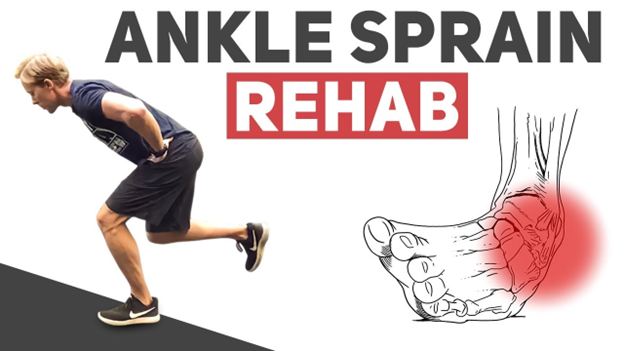Ankle sprains are common injuries that can severely impact mobility. Whether you’re an athlete or someone who simply missteps, understanding these injuries is crucial. Knowing how to handle sprains can lead to a quicker recovery. Physiotherapy for ankle sprains plays a critical role in ensuring you heal fully, preventing long-term complications like recurring injuries. It’s not just about relieving pain; it’s about ensuring your ankle is as strong and functional as it was before the injury.

Understanding Ankle Sprains: Causes and Symptoms
Ankle sprains occur when you twist or turn your ankle awkwardly, affecting the ligaments that hold your ankle bones together. There are different grades of ankle sprains:
- Grade 1: Mild stretching of the ligament.
- Grade 2: Partial tearing, more pain and swelling.
- Grade 3: Complete tear of the ligament, leading to instability.
Common causes include sports injuries or simple missteps like walking on uneven surfaces. It’s crucial to address them immediately to avoid worsening the injury. Sprains can cause pain, swelling, bruising, and even trouble moving your ankle. If you experience any of these signs, it’s important to start treatment right away. Recognizing the symptoms helps you seek physiotherapy for ankle sprains quickly, which can be a game-changer for recovery.
Early Intervention: Implementing the RICE Protocol
For an ankle sprain, early care is vital. The RICE method can be extremely effective in these initial stages:
- Rest: Avoid putting weight on your injured ankle. Give it enough time to heal, usually a few days, until the pain reduces.
- Ice: Apply ice packs for 15 to 20 minutes every few hours. This helps reduce swelling and ease pain.
- Compression: Use an elastic bandage to wrap your ankle. It helps control swelling but make sure it’s not too tight.
- Elevation: Keep your ankle raised above your heart level to help reduce swelling.
Following these steps can greatly reduce the swelling and pain. These simple actions protect the damaged ligaments, making physiotherapy for ankle sprains more effective when started.
Personalized Physiotherapy: A Key to Holistic Recovery
After the immediate treatment, starting a tailored physiotherapy plan is key. Ideally, begin rehabilitation exercises a few days post-injury, once the swelling and pain have subsided. Experts from Ketaki Revival Multispecialty Hospital emphasize that a personalized approach boosts recovery. Creating individualized plans addresses unique needs, helping regain strength more efficiently. Mixing physiotherapy for ankle sprains with proper nutrition and lifestyle changes ensures a comprehensive recovery. It’s important not only to focus on the injured ankle but also to consider overall body wellness for long-term health.
Advanced Rehabilitation Techniques: Achieving Full Recovery
As you heal and move forward, intermediate exercises become essential. These exercises help restore balance, stability, and strength to your ankle. Simple activities like:
- Resistance exercises: Use bands for safe resistance to strengthen the ankle.
- Balance techniques: Try standing on one foot to improve stability.
Decide whether to continue with home exercises or opt for supervised sessions. Sometimes, professional guidance is necessary, especially for advanced movements. Hydrotherapy treatments offered at Ketaki Revival Multispecialty Hospital can also be beneficial. Water reduces stress on your ankle, making it easier to perform exercises without pain. Consulting a physiotherapist ensures you’re on the right track.
Leading Edge Care at Ketaki Revival Multispecialty Hospital
Ketaki Revival Multispecialty Hospital offers state-of-the-art facilities and expert physiotherapists dedicated to providing top-notch care. Their approach focuses on patient-centered treatment, ensuring each individual’s needs are met. From personalized plans to modern techniques, they ensure quick and effective recovery. With a focus on innovative methods, Ketaki Revival is the choice for those needing effective physiotherapy for ankle sprains.
Prevention and Long-Term Care: Keeping Ankle Sprains at Bay
Preventing future ankle sprains is essential for continued foot health. One of the most common myths is that once you’ve had a sprain, you’re less likely to suffer another. In fact, the opposite is true. Physiotherapy for ankle sprains plays a big part in preventing these recurring injuries. Here’s how to care for your ankles on a long-term basis:
- Balance exercises: Regular practice can improve stability and prevent mishaps.
- Proper footwear: Choose shoes that offer good support to your ankle.
- Lifestyle adjustments: Maintain a healthy weight to reduce ankle stress.
For long-term joint health, consider a plan that balances exercise, diet, and lifestyle. Include regular physiotherapy for ankle sprains to ensure your ankles stay strong and functional. Being proactive keeps you active and minimizes the risk of sprains. Always focus on prevention and seek help should any issues arise to maintain your ankle health over time.


